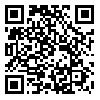BibTeX | RIS | EndNote | Medlars | ProCite | Reference Manager | RefWorks
Send citation to:
URL: http://jccnc.iums.ac.ir/article-1-110-fa.html
Background: Diagnostic cardiac catheterization is a common procedure in coronary artery disease. Patients’ movement and activities are limited because of potential risks; therefore, they need bed rest. The current study aimed at investigating the impacts of changes in body position and earlier ambulation on comfort, bleeding, and ecchymosis after the diagnostic cardiac catheterization.
Methods: The current clinical trial with quasi-experimental design included 90 patients undergoing diagnostic catheterization hospitalized in Shariati Hospital, Tehran, Iran. The purposive sampling method was used in the current study and subjects were allocated into 2 groups of intervention and control each of 45. The control group received the routine practices, the supine and flat rest for 8 to 24 hours, and sandbag for 8 hours. The intervention group changed their position in bed; first hour in flat position and head of bed in 15° and second hour in flat position and head of bed in 30°; then, in the 3rd hour in 45° position as well as applying sandbag on catheter entrance site for the first 3 hours; then, the patient was allowed to rest in any position (15° to 30°). Levels of comfort as well as the amount of bleeding and ecchymosis were studied immediately after the admission, 6 hours, 24 hours, and 7 days after the catheterization. Then, the results were analyzed using Chi-square and the Mann-Whitney tests with SPSS V. 11.5.
Results: There was no significant difference in the levels of comfort as well as the amount of bleeding and ecchymosis in early admission between the 2 groups, but the level of comfort was higher in the intervention group than the control group at the hours 6 and 24 after the catheterization (P < 0.001); in addition, there were no statically significant difference between the intervention and control groups in the amount of bleeding and ecchymosis at 6 hours, 24 hours, and 7 days after the catheterization (P = 0.99).
Conclusion: It was observed that patients may be allowed to change their bed position, and they may be ambulated earlier (the sixth hour) after the diagnostic cardiac catheterization.
| بازنشر اطلاعات | |
 |
این مقاله تحت شرایط Creative Commons Attribution-NonCommercial 4.0 International License قابل بازنشر است. |





